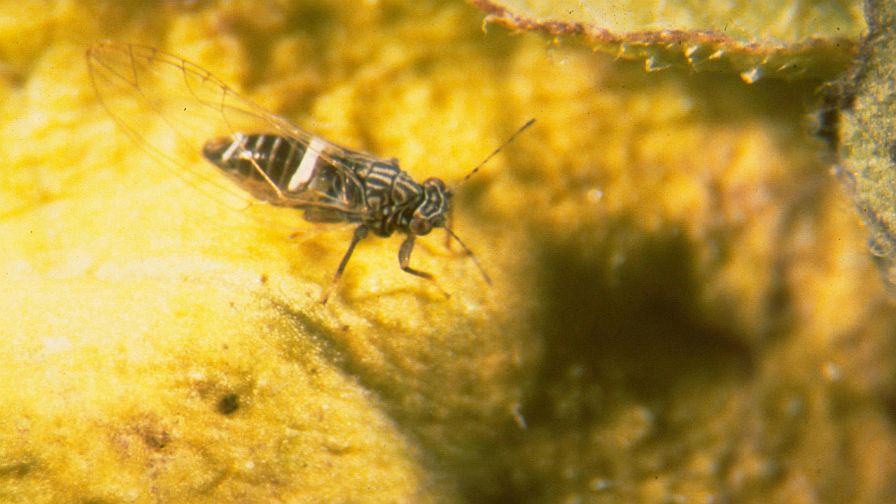Biocontrol Increasingly Important Option Against Potato Psyllid
 Neonicotinoids, a key weapon in the grower’s arsenal against potato psyllids, is becoming less effective, a team of researchers from Texas A&M have found.
Neonicotinoids, a key weapon in the grower’s arsenal against potato psyllids, is becoming less effective, a team of researchers from Texas A&M have found.
The research “provides strong evidence that these insecticides no longer suppress populations of psyllids below desirable levels,” says Ada Szczepaniec, Texas A&M AgriLife Research entomologist and lead researcher on the project.
Potato psyllids infect crops with the bacterium, Candidatus Liberibacter solanacearum (Lso), which causes zebra chip.
The study weighed if neonicotinoid application at planting is more effective than post-emergent insecticides. The post-ermegents proved to be more effective.
Szczepaniec says the next step is to research if populations of psyllids across Texas are resistant to any other frequently used insecticides.
How the Study was Structured
Szczepaniec [pronounced Stra PA netz] studied colonies of potato psyllids from all major potato-producing areas of Texas. The colonies were maintained in a greenhouse for at least two generations before the research team ran experiments on their resistance to neonicotinoids.
“Over the course of a year and a half, we completed testing the majority of the populations of psyllids for resistance to imidacloprid and thiamethoxam,” Szczepaniec says.
Second Study May Point to a Solution
Szczepaniec says using beneficial insects to help control psyllids may be a reliable method when Lso levels are low. She is conducting research in this area, although more needs to be done to understand how effective biocontrols are.
In this second study, which has been under way for a year, Szczepaniec is surveying all arthropods associated with three different potato types — a russet, a red, and a chipping variety.
“The survey has revealed trends in predator abundance that have important implications for potato production,” she says. “First, potatoes harbor a relatively diverse group of predators, and minute pirate bugs in particular are associated with potatoes throughout the season.”
Minute pirate bugs are key predators of the potato psyllid and important to suppressing the psyllid, she says.
Other predators included long-legged flies (generalist predators), lady beetles, spiders, parasitoid wasps, and syrphid flies. Russet potatoes had the highest prevalence of predators.
Another early finding of the predators-of-potato-pests survey is that minute pirate bugs are especially interested in thrips. The thrips may attract this key predator to fields of potatos, where minute pirate bugs then also attack psyllids. Szczepaniec says thrips are abundant in potatoes throughout the season and are not key pests of potatoes.
“Given the high incidence of the key psyllid predator, we believe integrating insecticide applications at lower intensity than weekly sprays with biological control releases may provide a viable option for psyllid suppression, especially when the proportion of psyllids transmitting the pathogen is very low,” Szczepaniec says.
Her Past Research on Neonicotinoids Point to It Weakening Plant Defenses
This study isn’t the first time Szczepaniec has investigated the efficacy of neonics. In a previous study, she found that neonicotinoid insecticides suppress plant defense genes, altering levels of phytohormones (which are involved in plant defense), and decrease plant resistance in multiple, distantly related plants.
“Our findings were important because applications of neonicotinoid insecticides have been associated with outbreaks of spider mites in several unrelated plant species,” Szczepaniec said at the time of her appointment as a researcher at Texas A&M in 2015.
In yet another study, she investigated how using neonicotinoids created a spider mite outbreak in of elms in Central Park in New York City. Szczepaniec concluded that the widespread use of neonicotinoid insecticides such as imidacloprid increased spider mite fecundity and created the pest outbreak.









